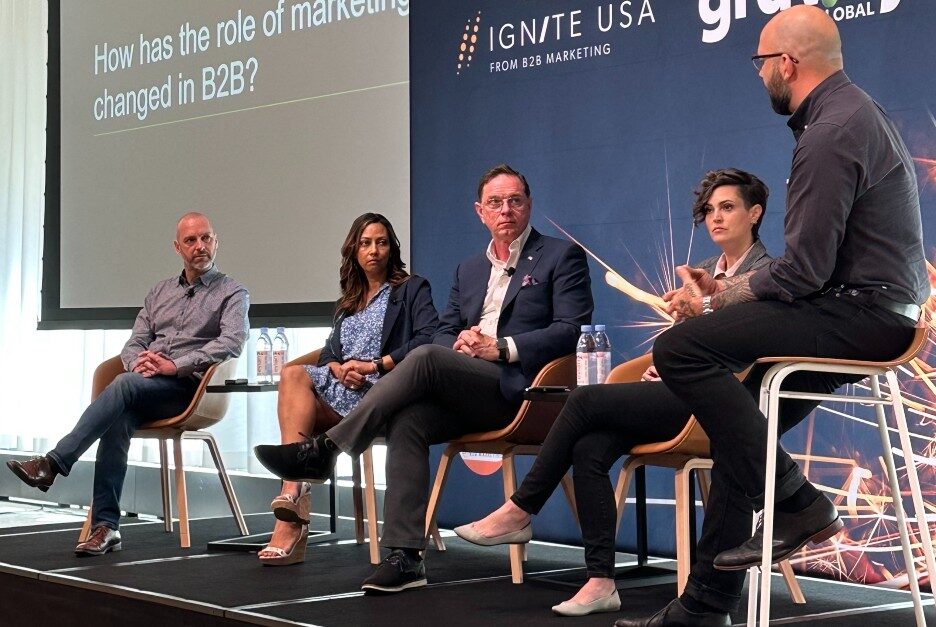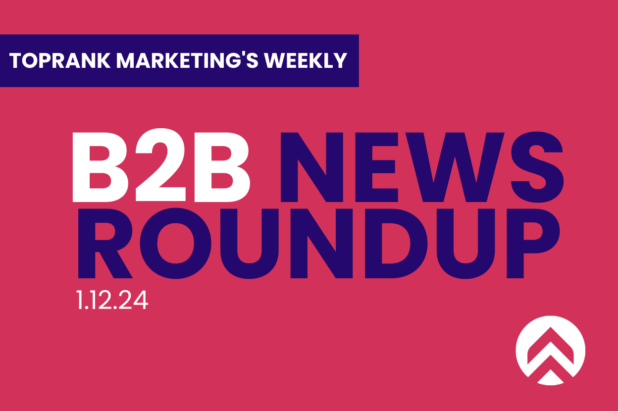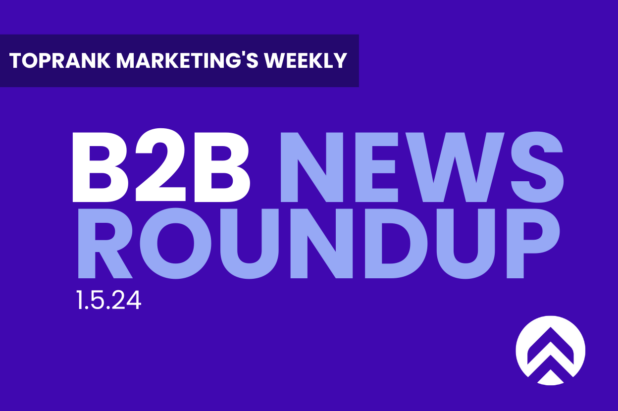The one constant in marketing is change and in B2B marketing that truism is no different. B2B marketers in search of insights into dealing with change and elevating B2B marketing gathered in Chicago this week at the B2B Ignite USA conference. Sessions run the gamut of B2B marketing topics including what has changed for marketers and how to adapt.
When thinking about the changes in the role of Marketing for B2B companies, the list is long including:
Digital transformation. The pandemic accelerated the adoption of digital technologies and channels by both businesses and consumers. B2B buyers now expect seamless and personalized online experiences, similar to those offered by B2C brands. In 2023, B2B marketers must leverage digital tools and platforms to reach, engage, and convert their prospects and customers.
Changing buyer behavior. B2B buyers are more informed, empowered, and independent than ever before. They conduct extensive research online before contacting a salesperson, and they rely on peer reviews, social media, and influencers for recommendations. In 2023, B2B marketers must adapt to this evolving consumer behavior by reaching buyers where they conduct their research, providing relevant content and resources, and demonstrating success for customers.
Brand development. B2B buyers are not only looking for products or services that solve their problems, but also for brands that share their values, vision, and purpose. B2B brands must differentiate themselves from their competitors by building trust, credibility, and loyalty with their audience. In 2023, B2B marketers must focus on developing their brand identity, voice, and story, and communicating them consistently across all channels.
Of course we could also go down the generative AI rabbit hole, but that’s for another post.
For now, I’ll share insights shared on a panel that included moderator Josh Okun from 9thWonder, LaSandra Brill from NVIDIA, Steve Cheliotis from Gravity Global, Bob Hastings from Robert Hastings & Associates and Lindsey Salens from CeriFi.
Steve: The environment is now more complex and there’s more competition. There’s been a shift in share of voice to share of attention. Brands need a heightened share of attention and need to focus on always-on. B2B marketers need to embrace the complexity to make sure they are top-of-mind for the 95% that are out-market and are the first choice when buyers are in-market.
“B2B marketers need to embrace the complexity to make sure they are top-of-mind for the 95% that are out-market and are the first choice when buyers are in-market.” — Stephen Cheliotis @TCBA_London Click To TweetLindsay: The entire dynamic has changed in B2B. We’re consuming twice as much content as pre-covid. The attention economy is a bigger focus now. And the B2B buying process is hard. In our case, there are 12-13 people involved in the buying process. So it’s important to leverage the tools we have to get the right message out at the right time to customers. We need to figure out how to align brand, demand and buying and operate less in silos.
LaSandra. AI has accelerated our ability to take data and do so much so quickly. B2B marketers need to lean into the tech and focus on how to bring AI into their marketing. NVIDIA is doing that with a custom CDP built in-house.
Bob. As our customers are surrounded by more AI-driven content it is more important to create trust. That trust is created by the human dynamic not only with AI.
“As our customers are surrounded by more AI-driven content it is more important to create trust. That trust is created by the human dynamic not only with AI.” — Robert T. Hastings @RTHastingsJr Click To TweetBeyond the newer challenges happening in the B2B marketing world, some issues persist year after year including the tendency for B2B marketers to be polarized about driving awareness or transactional conversion marketing.
Bob: Leadership influences the marketing culture. The CEO might be brand focused. A VP might be more lead gen focused. In many cases products end up being the same so the question then becomes, which brand will customers trust? You have to use the whole brand and demand toolkit to find out where to best engage customers.
Steve: We cannot underestimate the power and value of brand. We are marketing to humans. As brand builders it’s not just about awareness, it’s about creating competitive advantage. Both brand and demand need to be always-on. Well done brand marketing supports demand generation. It’s not a binary choice.
Lindsay: B2B marketers need to think holistically about the buying journey and use the right tools. The middle is hard — we cannot just focus on awareness and conversion. It’s easy to fall into the trap of instant gratification but it’s important to focus on the buying journey holistically.
Maybe marketing should get commissions on sales the way sales teams do.
“B2B marketers need to think holistically about the buying journey and use the right tools. The middle is hard — we cannot just focus on awareness and conversion.” — Lindsey Salens of CeriFi Click To TweetLaSandra: Most marketers are focused on the lead. The middle is hard because it’s not a lead, it’s at the account level.
Another persistent issue with B2B marketing is the effort to adopt an always-on mindset vs. switching on and switching off. Certainly customers don’t manage their buying efforts according to the on/off marketing cycles of solution providers. Always-on marketing is more consistent with what works for customers but it requires a shift in perspective within B2B brands.
Steve: The data shows that always-on is more effective. The idea that you turn marketing on when times are good and turn it off when times are tough doesn’t make sense.
You have to build a relationships and mental market share. And that comes from multiple touch-points over time. It’s inefficient to do ad hoc activity. It’s more effective to layer understanding and appreciation over time. It’s like a friend that only calls when they need something from you vs. one that is talking to you regularly. It just makes sense.
We have to be effective and responsible with budgets, so be targeted and be consistent but don’t think that turning on / off is going to be as effective as always-on.
Lindsay: To get always-on buy-in internally you have to do a lot of selling. People are addicted to the instant gratification of lead gen and campaigns. Always-on is not just paid SEM that keeps going — there’s a lot more to it. So you have to have clarity about your ICP, strategy and resources. It’s about change management. Results open doors.
LaSandra: An always available budget is not the same as always-on. Enterprise has not adopted always-on yet. Our campaign marketers create the content and drive the on-off of marketing. It’s getting better though.
We use our annual conference to drive always-on to promote for half the year. Leadership is engaged by the results from broad ads that get attendees to the event and then more personalized communications after.
An always available budget is not the same as always-on. Enterprise has not adopted always-on yet. Our campaign marketers create the content and drive the on-off of marketing. It's getting better though.” — LaSandra Brill @LaSandraBrill Click To TweetLindsay: Give yourself some grace. It’s a process. Take small risks. Work to get partnerships in the organization, iterate and grow.
It’s safe to say that B2B marketing organizations are dealing with a lot including post-covid changes to marketing itself, the rapid escalation of AI in all aspects of digital life and the “do more with less” effect on expectations and budgets that we’ll be facing for the foreseeable future. To elevate B2B marketing in this environment, it’s important to be change agents for support of a holistic approach to marketing while properly valuing and measuring the impact of brand on revenue and showing positive impact of always-on vs. the start / stop approach that doesn’t really sync with buyer behavior.
You can also learn more from our additional B2B Ignite USA coverage here:



